Last updated on
Discover the essential steps to effectively clean your restaurant kitchen floor, ensuring a safe and hygienic environment for both staff and customers.
As a food lover, there’s nothing more satisfying than dining in a clean and hygienic restaurant. But have you ever wondered what goes on behind the scenes to maintain that spotless environment? One of the most crucial aspects of restaurant cleanliness is ensuring the kitchen floors are thoroughly cleaned.
Not only does it prevent slip and fall accidents, but it also helps to keep food contamination at bay. In this article, we’ll go over some tips and tricks on how to clean your restaurant kitchen floor effectively.
So let’s get started!
What's Inside
Importance of Cleanliness
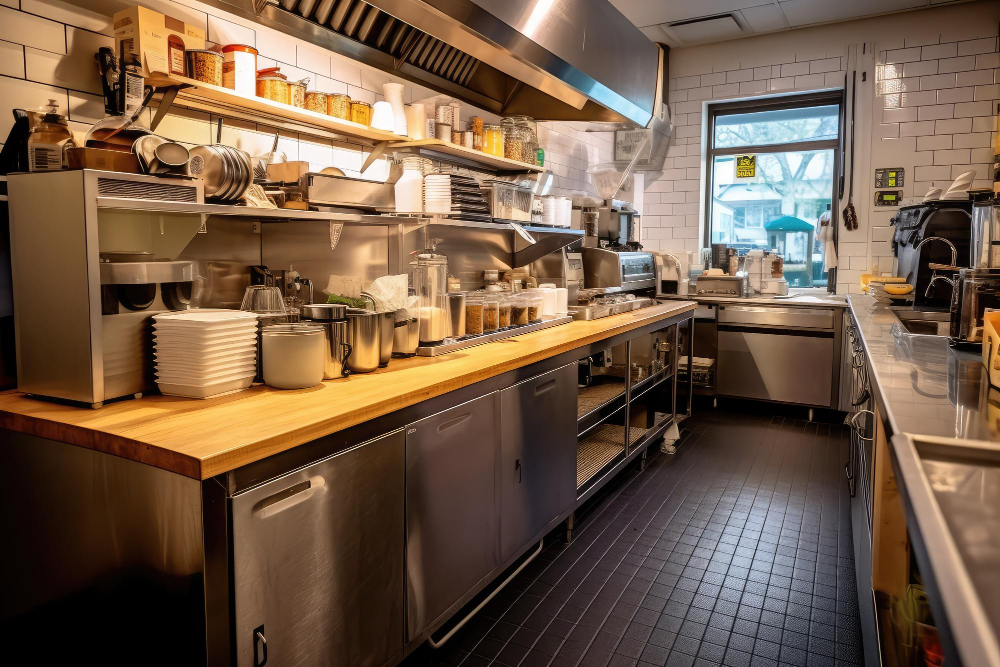
Maintaining a clean restaurant kitchen floor is crucial for several reasons. Firstly, it helps to prevent accidents caused by slips and falls, which can be costly in terms of medical bills and lawsuits.
Secondly, a dirty floor can harbor bacteria that cause foodborne illnesses if not cleaned properly. This poses a significant risk to both staff members and customers who consume the food prepared in the kitchen.
Moreover, cleanliness is an essential aspect of running any business successfully; it creates an excellent first impression on customers when they walk into your establishment. A clean environment also boosts employee morale as they feel more comfortable working in hygienic surroundings.
Dangers Of A Dirty Restaurant Floor
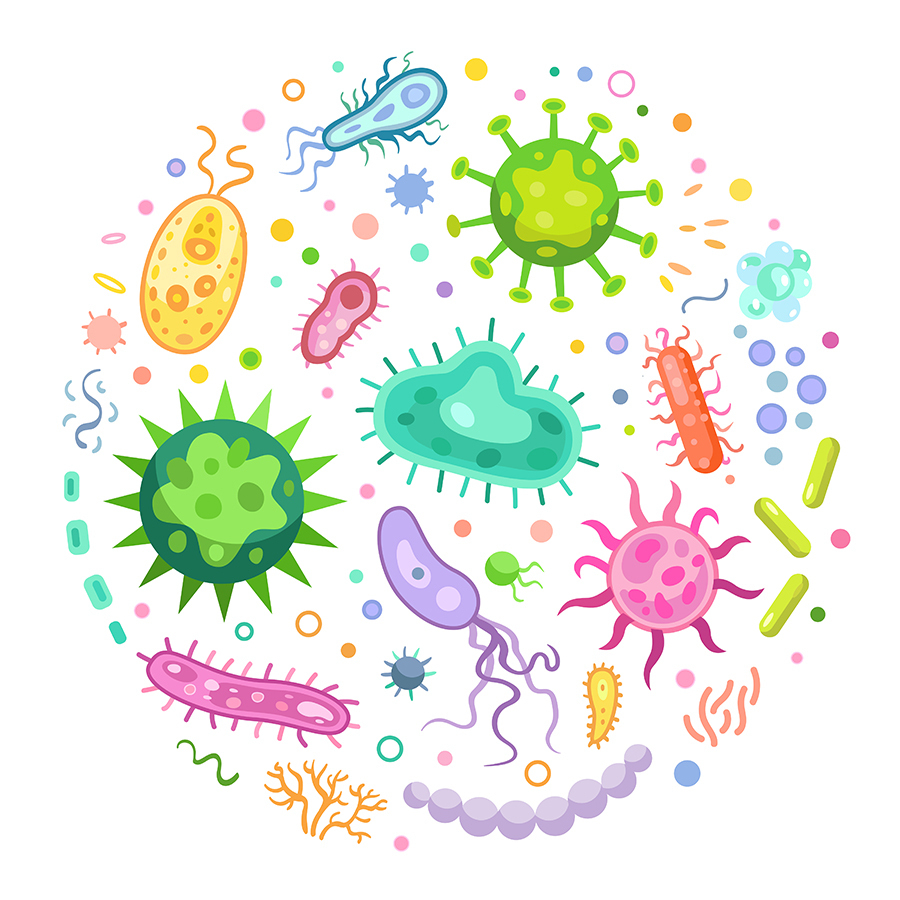
Not only does it look unappealing, but it also creates an unsafe environment that could lead to accidents and injuries. Grease, oil spills, food debris, and other contaminants can accumulate on the kitchen floor over time if not cleaned properly.
These substances make the surface slippery and increase the likelihood of slip-and-fall accidents in your establishment.
Moreover, a dirty restaurant floor is also a breeding ground for bacteria that cause foodborne illnesses such as salmonella or E.coli. When these pathogens come into contact with food or utensils used for cooking or serving meals to customers, they can easily spread throughout your establishment causing severe health hazards.
Why Floors Get Dirty
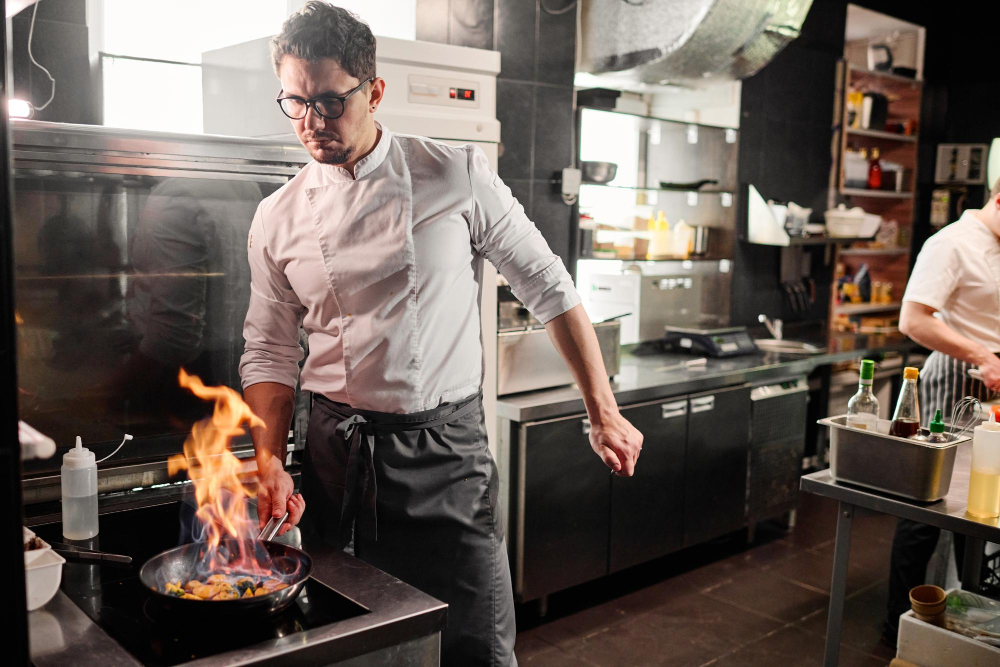
Food spills, grease splatters, and foot traffic are just some of the reasons why floors get dirty. In addition to these factors, there are other underlying causes that contribute to a filthy kitchen floor.
One reason is poor ventilation. Without proper air circulation in the kitchen area, steam from cooking can settle on surfaces like floors and walls causing them to become sticky or greasy over time.
Another factor is inadequate cleaning practices. If your staff isn’t trained properly on how to clean up after themselves or if they don’t have access to appropriate cleaning supplies such as mops or degreasers then dirt will accumulate faster than you can imagine.
Lastly but not least important – pests! Cockroaches love nothing more than hiding out under appliances where food debris accumulates unnoticed for weeks at a time before being discovered by an unsuspecting employee who has been tasked with deep-cleaning duties!
Daily Cleaning Routine
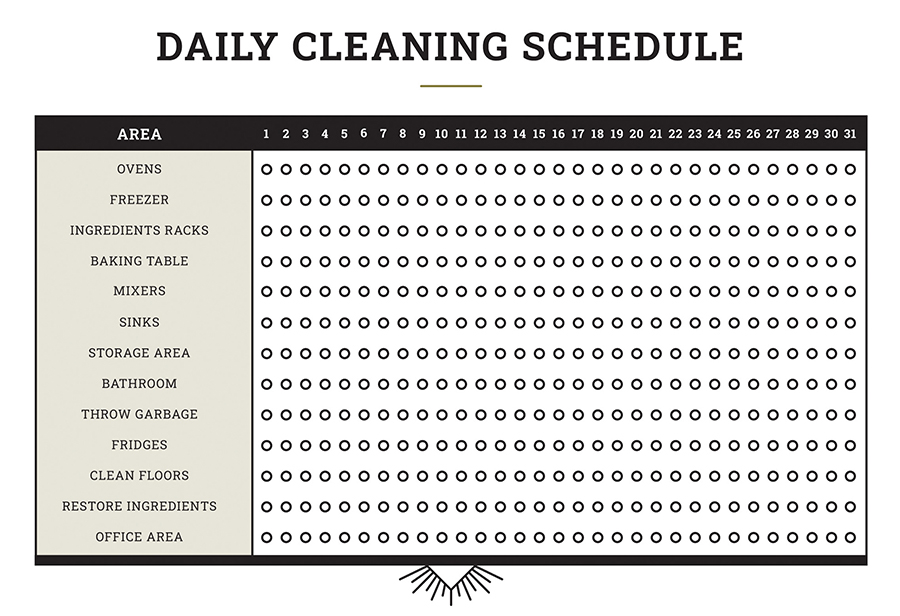
It’s important to establish a schedule that works for your staff, ensuring that everyone knows their responsibilities and the tasks they need to complete each day.
Start by sweeping or vacuuming the floors thoroughly before mopping them. This will help remove any loose debris, such as food particles or dirt, which can scratch the surface of your flooring if left unattended.
Next, use hot water with an appropriate cleaning solution designed for commercial kitchens. Be sure not to use too much water as it can seep into cracks between tiles or grout lines causing damage over time.
After mopping up all visible stains and spills on the floor surface using a mop bucket filled with warm soapy water (or disinfectant), rinse off excess soap residue from surfaces using clean cold-water rinses until no more suds are present in order not leave behind slippery residues that could cause accidents later on during service hours.
Steps to Mop Floors
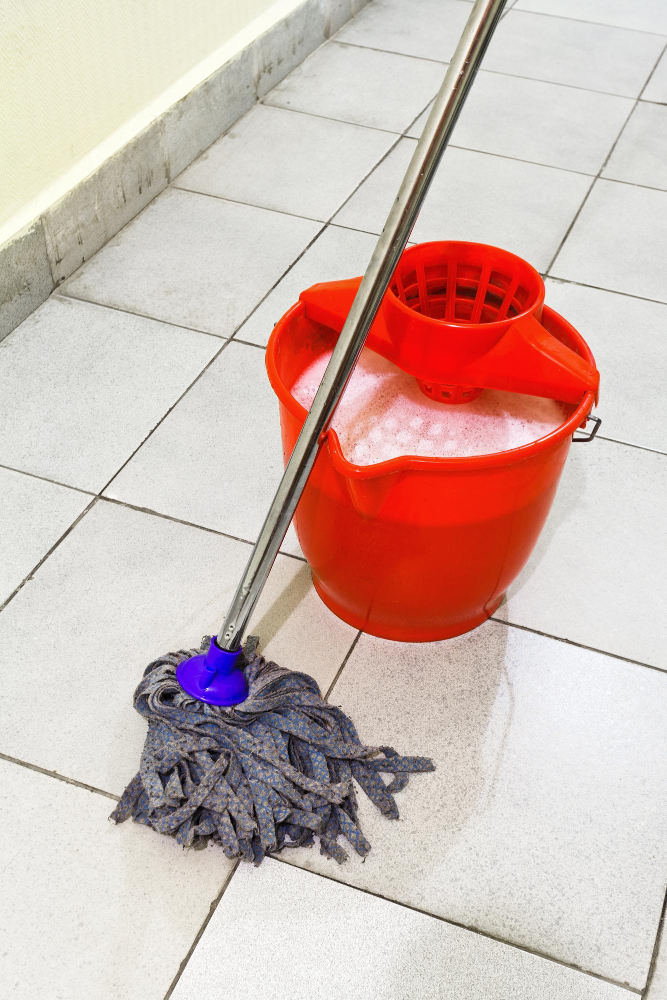
Mopping is an essential part of cleaning your restaurant kitchen floor as it helps remove dirt and grime that sweeping alone cannot eliminate. Here are some steps to follow when mopping your restaurant kitchen floors:
- Fill a bucket with hot water and add a cleaning solution appropriate for your flooring type.
- Dip the mop into the bucket, wring out excess water until damp but not dripping.
- Start at one end of the room and work in small sections, moving backward towards an exit point.
- Use figure-eight motions while applying pressure on stubborn stains or grease spots
- Rinse out mop frequently in clean water before dipping back into soapy solution
- Once finished mopping entire area rinse thoroughly with clean warm water
- Allow floors to air dry completely before allowing foot traffic.
Degreasing Techniques
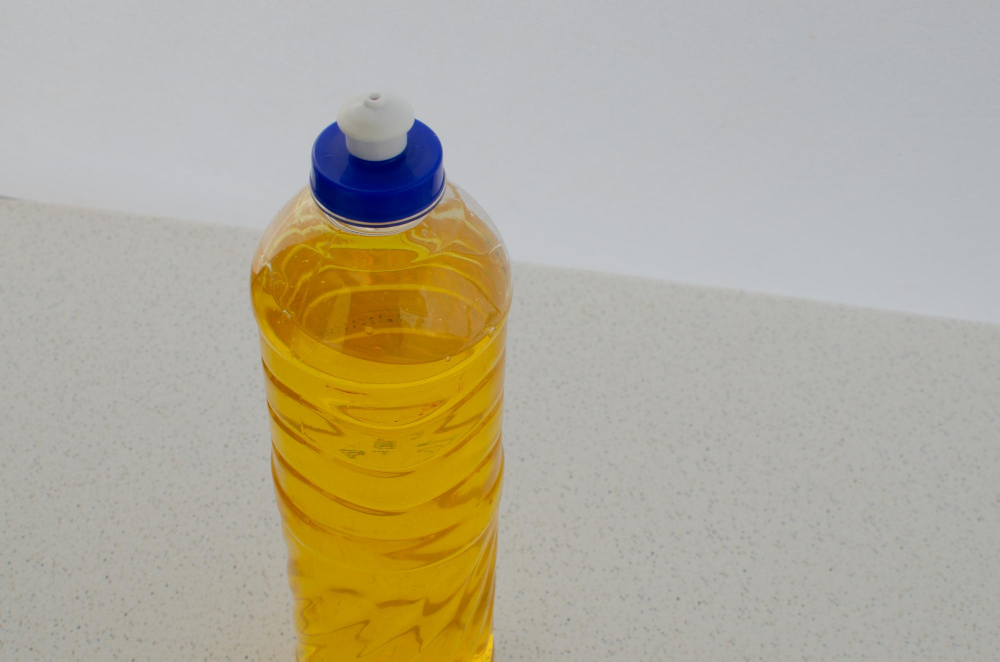
To remove stubborn grease stains, you need to use degreasing techniques that work effectively. One of the most popular methods is using a commercial degreaser solution mixed with hot water.
Apply the solution on the affected area and let it sit for several minutes before scrubbing with a stiff-bristled brush or floor machine.
Another effective technique is using baking soda mixed with vinegar or lemon juice to create an all-natural cleaning paste that works wonders on greasy surfaces. Spread this mixture over your kitchen floor and let it sit for 10-15 minutes before rinsing off thoroughly.
It’s important not to overlook hard-to-reach areas such as corners, baseboards, and under equipment when degreasing your restaurant kitchen floor since these spots tend to accumulate more dirt than other areas.
Disinfection Methods
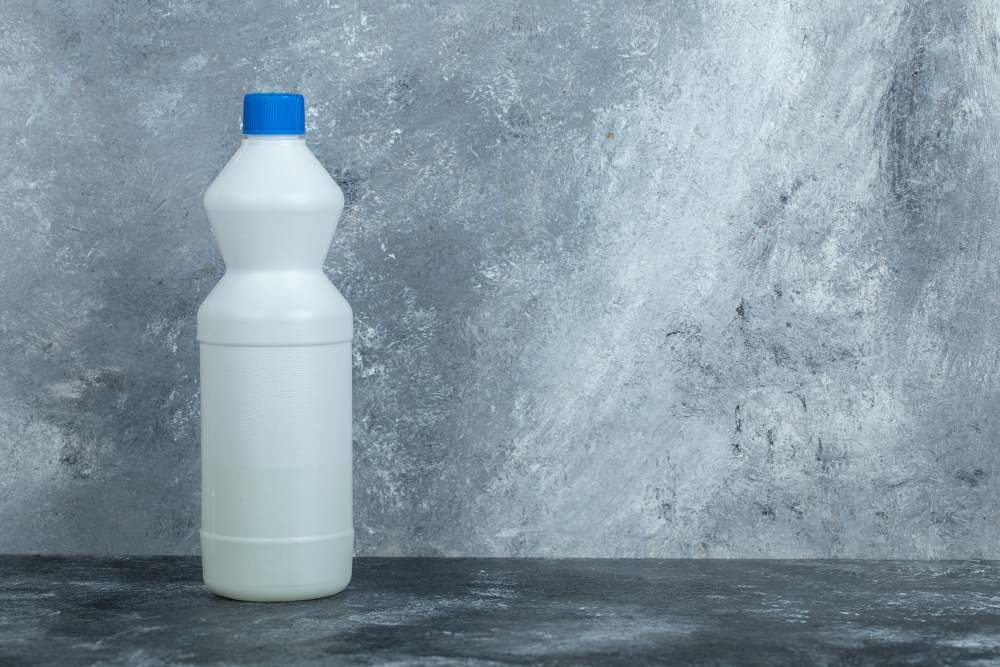
Disinfecting is the process of killing germs and bacteria that may be present on the surface. It’s essential to use a disinfectant that is approved by health authorities and follow the manufacturer’s instructions for proper usage.
One common method of disinfection is using bleach diluted in water. Mix one tablespoon of bleach with one gallon of water, then apply it to your kitchen floor using a mop or spray bottle.
Allow the solution to sit on the surface for at least five minutes before rinsing with clean water.
Another effective way to sanitize floors is by using steam cleaners or UV light technology, which can kill up 99% percent of germs without chemicals.
It’s important not only focus on cleaning but also ensure proper sanitation measures are taken regularly as well as training staff members about hygiene protocols so they can maintain cleanliness standards throughout their shifts.
Grout and Tile Care
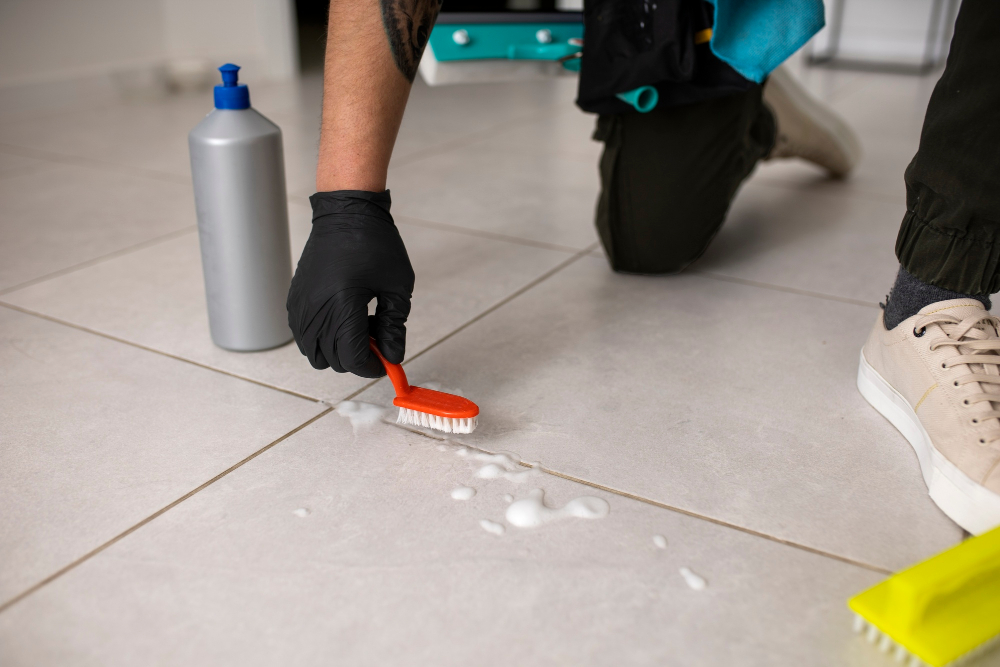
Neglecting to clean it regularly can lead to discoloration and even mold growth. To keep your restaurant kitchen floor looking its best, you need to pay attention to the grout lines.
Start by sweeping or vacuuming the area around the tiles thoroughly. Then use a stiff-bristled brush with warm water mixed with mild detergent or vinegar solution (1: 1 ratio) on each tile’s surface before scrubbing along each grout line carefully.
For stubborn stains that won’t come off easily, try using baking soda paste (mix 3 parts of baking soda with 1 part of water) applied directly onto the affected areas before scrubbing again gently.
Once you’ve finished cleaning all surfaces thoroughly, rinse everything down well using clean water only – no soap residue should be left behind as this could attract more dirt over time!
Slip-Resistance Maintenance
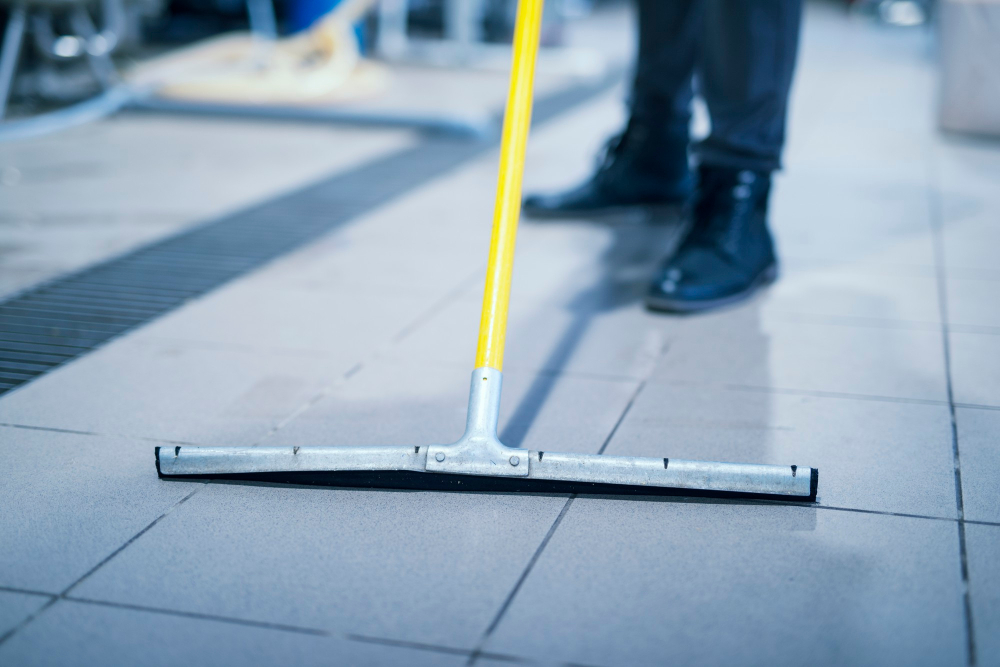
Slippery floors can lead to accidents, which can result in injuries and lawsuits. To prevent this from happening, it’s essential to maintain the slip-resistant properties of your flooring.
One way to do this is by using specialized cleaning products that are designed specifically for slip-resistant surfaces. These products help remove dirt and grime without damaging the surface or reducing its slip resistance.
Another important factor in maintaining slip resistance is regular deep cleaning of the floor surface with a scrubber dryer machine or other mechanical equipment that uses brushes or pads instead of just mopping alone.
It’s also important to inspect your flooring regularly for any signs of wear and tear, such as cracks or chips in tiles, which could reduce their effectiveness at preventing slips. If you notice any damage on your floors during inspections then repair them immediately before they become hazardous.
Safe Chemical Usage
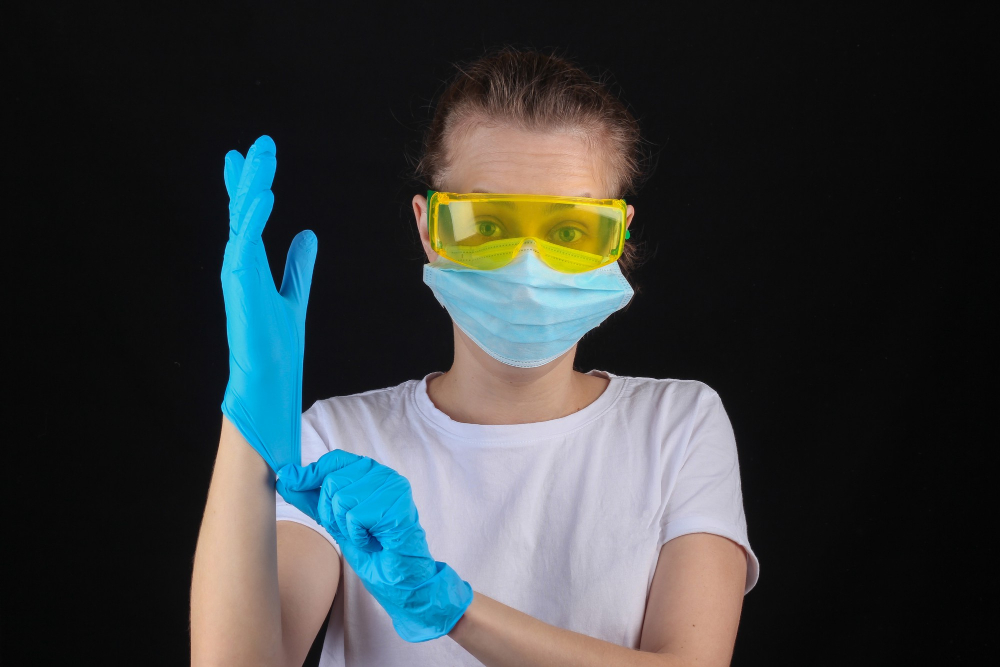
It’s equally important to use them safely and correctly. Always read the label instructions before using any chemical products and follow them carefully.
Make sure that all staff members are trained on how to handle cleaning chemicals properly. They should wear protective gear such as gloves and goggles when handling these substances.
It’s also essential to store all cleaning products in a secure location away from food preparation areas or anywhere where they could be accidentally spilled or mixed with other substances.
Avoid mixing different types of cleaners together as this can create dangerous fumes that can harm both employees and customers alike.
Cleaning Equipment

The most common tools used for cleaning floors are mops and buckets. However, there are different types of mops available in the market that cater to specific needs.
For instance, a flat mop is ideal for larger areas as it covers more ground quickly and efficiently. On the other hand, a string mop is better suited for smaller spaces or hard-to-reach corners.
When choosing a bucket to pair with your mop, make sure it’s large enough to hold enough water and cleaning solution without spilling over while being easy to maneuver around tight spaces.
Investing in an automatic scrubber can save time and effort when dealing with larger kitchens or high-traffic areas like dining halls. These machines use rotating brushes along with water jets that spray detergent onto surfaces before vacuuming up dirty water into their tanks.
Waste Disposal Protocol
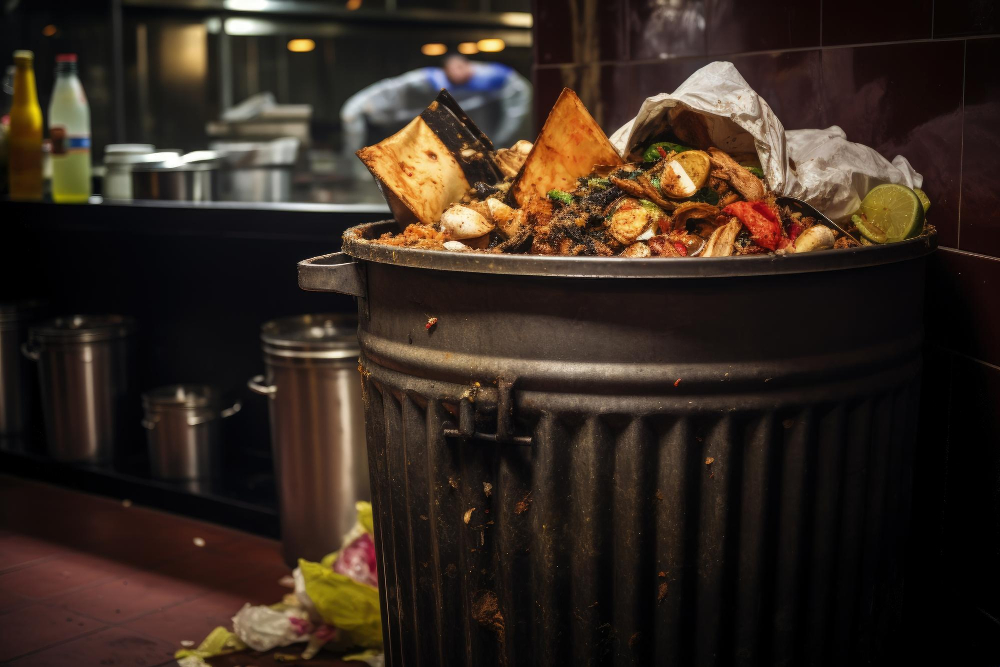
Food scraps, packaging materials, and other debris can quickly accumulate on the floor if not disposed of correctly. This buildup can attract pests such as rodents and insects that carry harmful bacteria.
To prevent this from happening, it’s crucial to have a waste disposal protocol in place. All staff members should be trained on how to dispose of food scraps properly using designated bins or containers with lids that seal tightly.
It’s also important to ensure that garbage bags are changed regularly throughout the day so that they don’t overflow onto the kitchen floor. Any spills or leaks from garbage bags should be cleaned up immediately using appropriate cleaning supplies.
Preventing Cross-Contamination
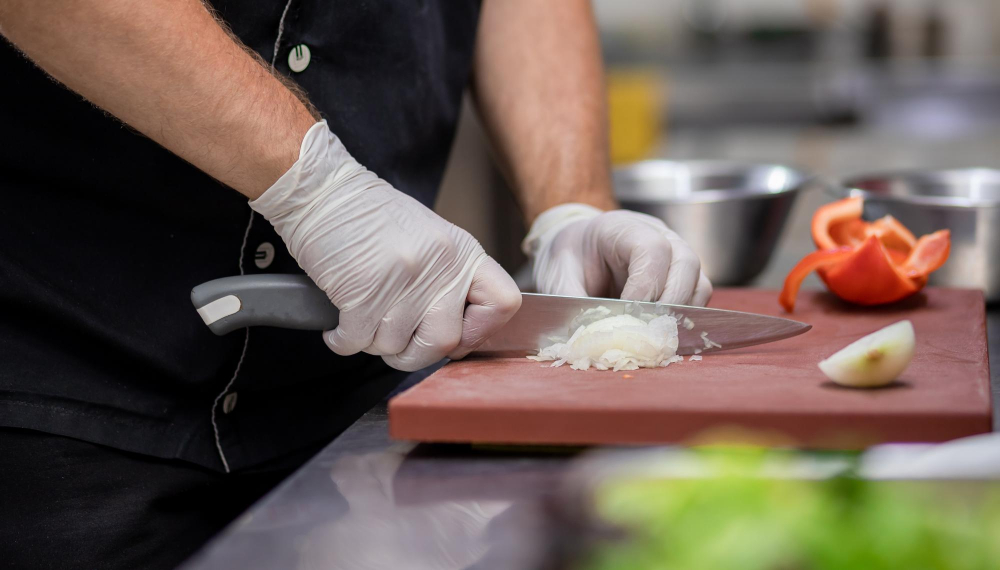
It occurs when harmful bacteria or germs are transferred from one surface to another, contaminating food and causing illness. To prevent cross-contamination, it’s essential to establish proper cleaning procedures and train staff members on the importance of hygiene.
One way to avoid cross-contamination is by using color-coded cutting boards for different types of food. For example, red can be used for raw meat, green for vegetables, blue for fish and seafood while yellow can be used as an all-purpose board.
Another crucial step in preventing cross-contamination is washing hands frequently with soap and warm water before handling any food items or touching surfaces that come into contact with them.
It’s also important to sanitize utensils regularly throughout the day using hot water or a sanitizing solution after each use. This includes knives, tongs spatulas among others.
Training Staff Members
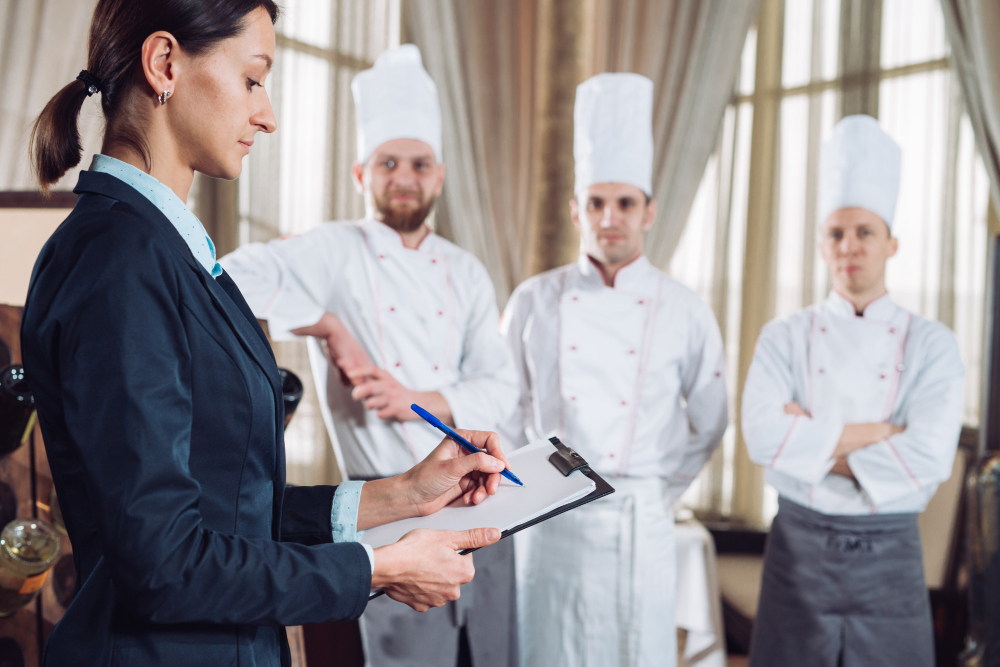
It requires teamwork and coordination among all staff members to maintain cleanliness and hygiene standards. Therefore, it’s essential to train your employees on proper cleaning techniques, safety protocols, and chemical usage.
Start by creating a training program that covers all aspects of floor cleaning in detail. This should include information on the types of chemicals used for different surfaces, how to use equipment correctly (such as mops or scrubbers), slip-resistant footwear requirements while working with wet floors.
It’s also important to emphasize the importance of following government hygiene standards when it comes to maintaining clean floors in restaurants. Make sure your staff understands why these regulations are necessary for their health and safety as well as those who dine at your establishment.
Cleaning Schedule Template
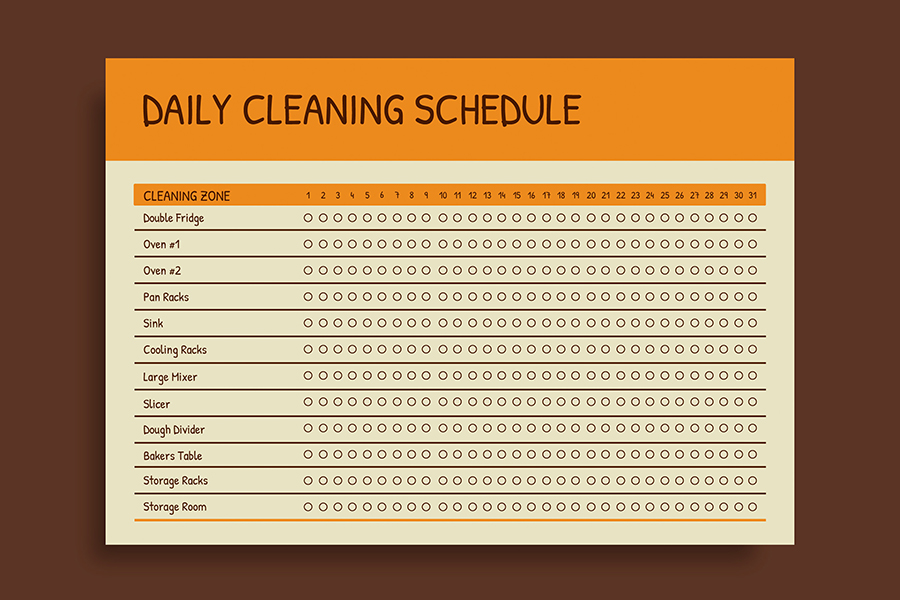
A cleaning schedule template can help you keep track of daily, weekly and monthly tasks that need to be completed. This will not only make the process more efficient but also ensures that nothing gets overlooked.
When creating a cleaning schedule template for your restaurant kitchen floor, consider the size of your establishment and how busy it is. For example, if you have a small café with low foot traffic compared to a large-scale fine dining restaurant with high foot traffic; their respective schedules would differ significantly.
The frequency at which certain areas are cleaned should also be taken into account when designing the template. High-traffic areas such as cooking stations or dishwashing zones may require more frequent attention than other parts of the kitchen.
Proper Storage for Cleaning Supplies
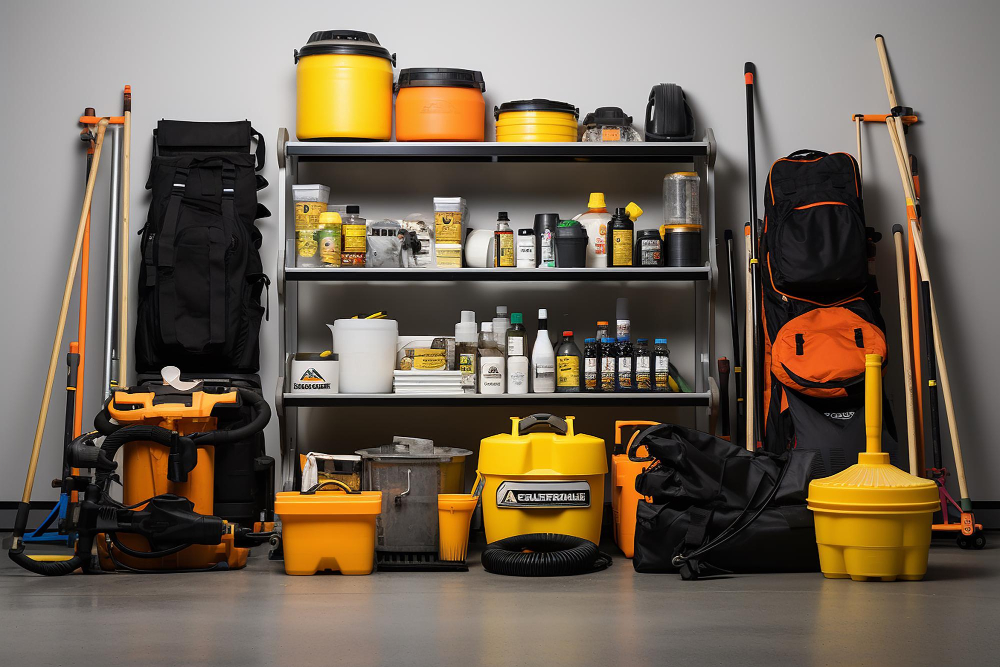
Proper storage not only ensures that your products last longer but also prevents accidents and contamination. Keep in mind that some chemicals can be hazardous if they come into contact with other substances or are exposed to heat or sunlight.
To avoid any mishaps, designate a specific area for storing your cleaning supplies away from food preparation areas and high-traffic zones. Make sure the space is well-ventilated and dry to prevent mold growth.
Store chemicals in their original containers with labels intact so that everyone knows what they contain. Avoid transferring them into unmarked bottles as this could lead to confusion among staff members.
Keep all equipment clean after use before storing it away properly; this includes mops, buckets, brooms etc., which should be hung up on hooks or placed on racks off the floor when not in use.
Maintaining A Clean Restaurant Floor
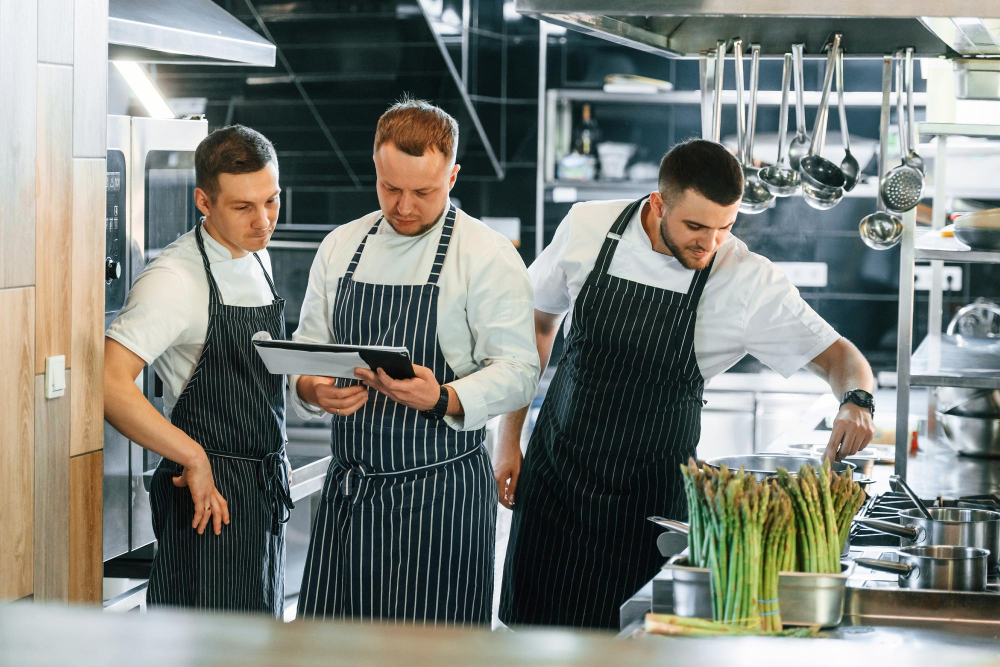
A clean floor not only looks good but also helps prevent accidents and keeps pests at bay. To maintain a clean restaurant floor, establish a daily cleaning routine that includes sweeping up debris and mopping the floors with disinfectant solution.
It’s important to train staff members on proper cleaning techniques so they can help keep the floors in top condition throughout the day. Encourage them to report any spills or messes immediately so they can be addressed promptly.
In addition to daily maintenance, schedule regular deep-cleaning sessions for your kitchen floors. This may involve using specialized equipment such as steam cleaners or scrubbers for tile grout lines.
Remember that maintaining a clean restaurant floor is an ongoing process that requires attention and effort from everyone involved in running your establishment.
Eco-Friendly Cleaning Options

The same goes for cleaning products used in restaurants. Traditional cleaning agents can be harmful to both humans and the environment, so it’s crucial to opt for eco-friendly alternatives.
There are many options available that are just as effective as traditional cleaners but without the harsh chemicals. For example, vinegar and baking soda make a great natural cleaner when mixed with water.
They’re also cost-effective and readily available.
Another option is using microfiber cloths instead of paper towels or disposable wipes since they can be washed and reused multiple times before needing replacement.
Government Hygiene Standards
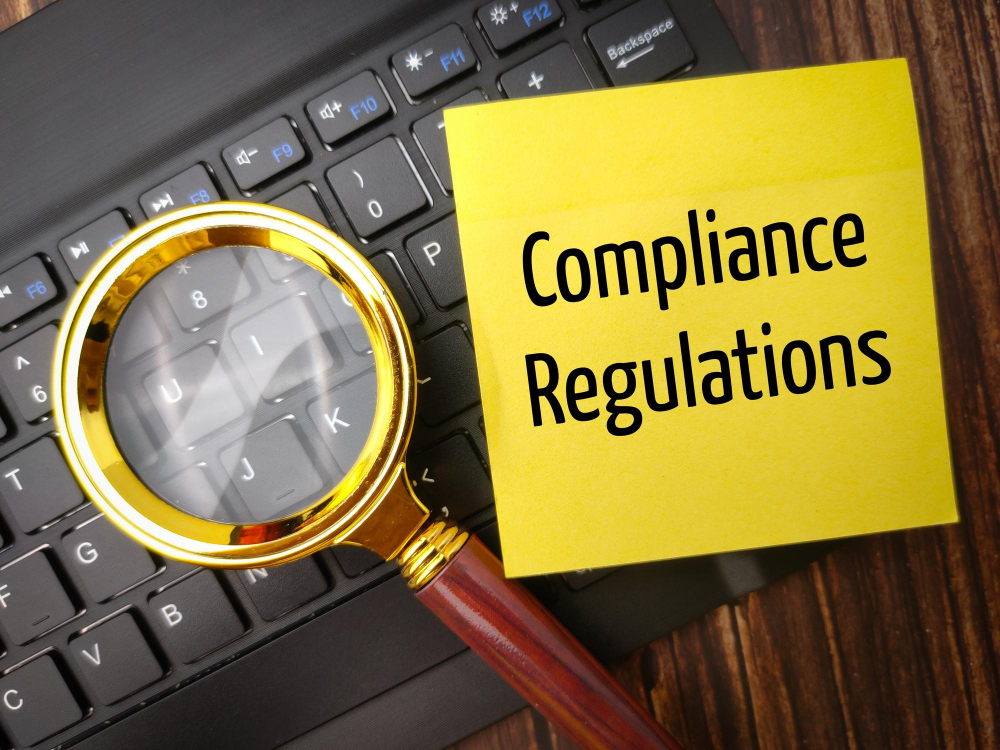
The government has set strict hygiene standards that restaurants must adhere to in order to operate legally. These regulations are put in place to ensure that customers are protected from foodborne illnesses and other health hazards.
As a restaurant owner or manager, it’s your responsibility to make sure your establishment meets these standards at all times. Failure to comply with these regulations can result in hefty fines or even closure of the business.
Some common areas where restaurants may fall short include improper waste disposal, inadequate cleaning procedures, and lack of staff training on proper hygiene practices.
To avoid any issues with government inspections and maintain customer trust, it’s essential for restaurant owners and managers to stay up-to-date on current hygiene standards and implement them consistently throughout their operations.
Pest Control Measures
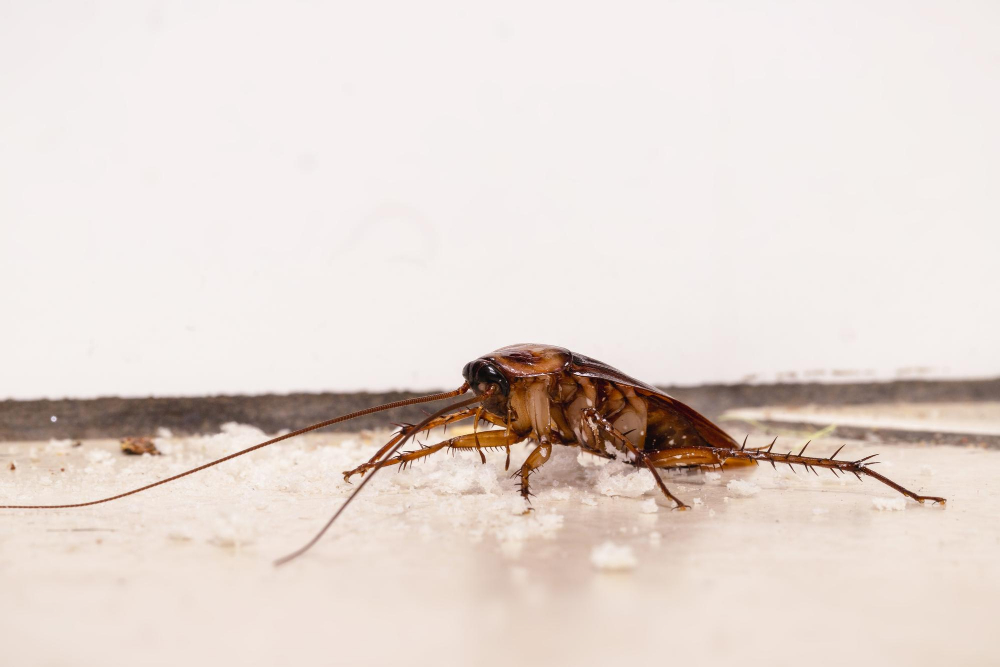
Pests such as rodents, cockroaches, and flies can carry harmful bacteria that can contaminate food preparation areas. To prevent pest infestation in your restaurant, it’s crucial to implement preventive measures such as sealing all entry points for pests, storing food correctly in sealed containers or refrigerators and cleaning up spills immediately.
Regular inspections by a licensed pest control professional should be scheduled to identify any potential issues before they become major problems. It is also important to educate staff members on the importance of proper waste disposal practices since garbage attracts pests.
By implementing these preventative measures consistently throughout your establishment you will not only maintain a safe environment but also ensure that customers have peace of mind when dining at your establishment knowing their health is being taken seriously.
FAQ
How do you clean commercial floors?
To clean commercial floors, mix hot water with a mild detergent for general mopping, and for deep cleaning tile floors, use ¼ cup of low-sudsing detergent or 1-2 tablespoons of commercial floor cleaning powder per gallon of water.
What are the best cleaning solutions and tools for maintaining hygiene in a commercial kitchen floor?
The best cleaning solutions and tools for maintaining hygiene in a commercial kitchen floor include using a low-foam detergent, a good quality scrubber, and a wet vacuum cleaner to effectively remove grease and dirt.
How often should restaurant kitchen floors be deep cleaned to ensure compliance with health standards?
Restaurant kitchen floors should be deep cleaned at least once a week to ensure compliance with health standards.
Are there any specific regulations or guidelines for cleaning commercial kitchen floors in the food service industry?
In the food service industry, cleaning commercial kitchen floors requires adhering to specific regulations and guidelines, such as using appropriate cleaning solutions, disinfecting surfaces, and following safety protocols.




